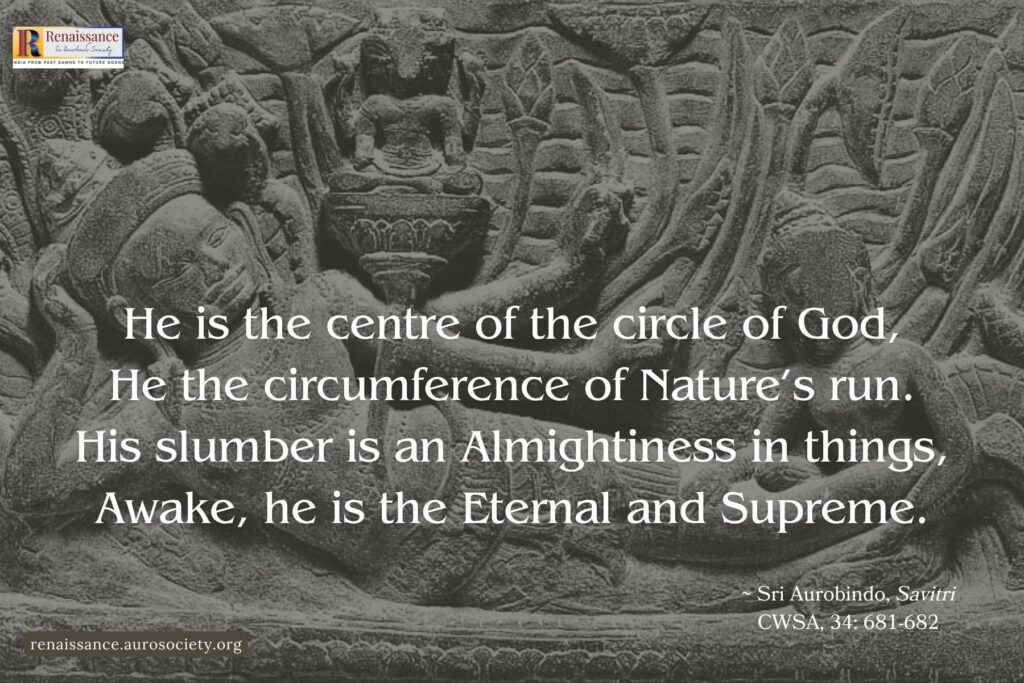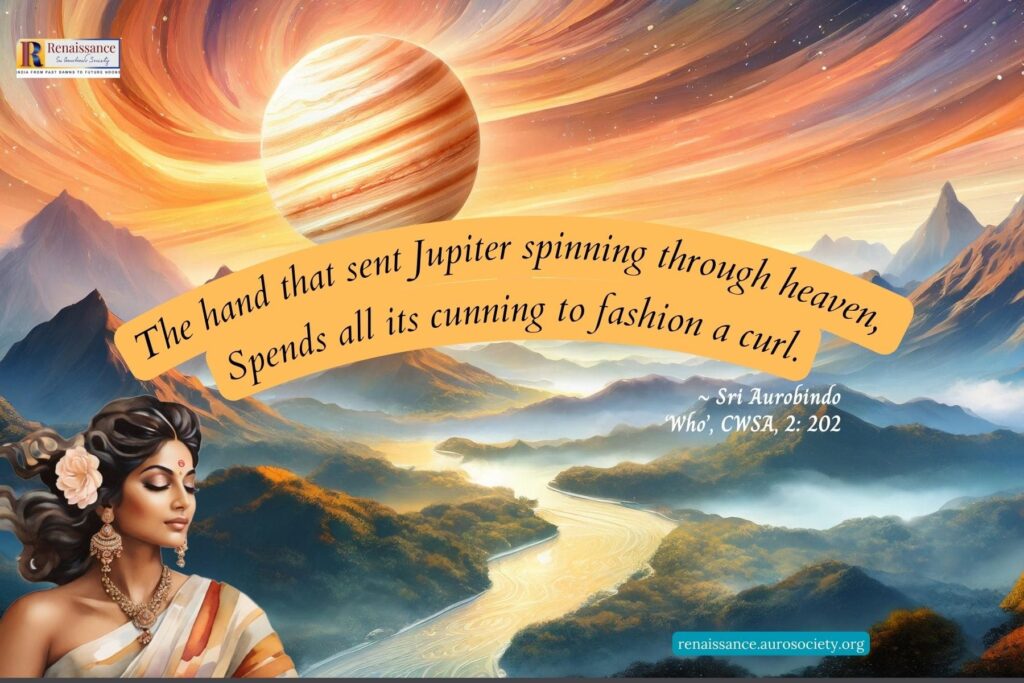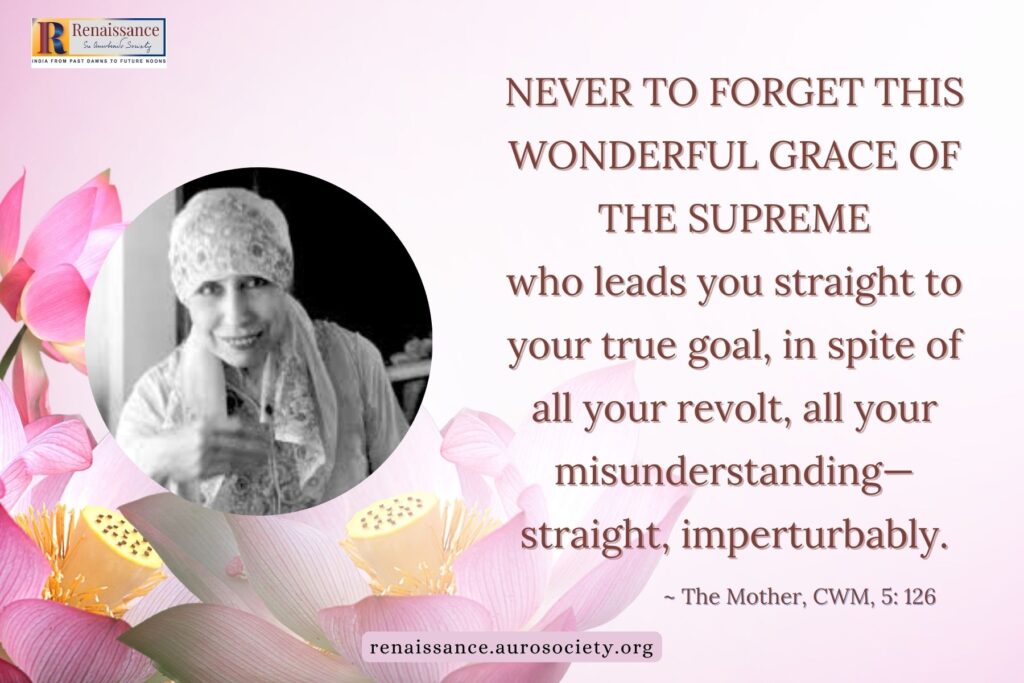Sri Aurobindo once said that literature, poetry, science and all other studies can be a preparation of the consciousness for life. But when one consciously walks the path of Yoga, these things can continue as part of the sadhana only if they are done for the Divine or taken up by the Divine Force. The first requirement there is that one should not want to be a writer or a poet for the sake of being a writer or a poet only, or for fame, applause, etc. (CWSA, Vol. 27, p. 723)
What does it mean to be engaged in literary activity for the Divine? And what kind of literature should a sadhak read, if any? Should it only be spiritual or religious literature? What about the literary classics that may be seen as ‘secular’ literature?
For a large majority of the educated people who at some point in their lives turn to spiritual pursuit, reading spiritual literature becomes a big part of their process. What is the right place and significance of reading spiritual literature in the path of sadhana? Can reading and meditating on such literature help prepare the sadhak, can it become a hindrance? These and a few other related questions are the focus of the current issue of Renaissance.
Reading can be only a momentary help to prepare the mind. But the real knowledge does not come by reading. Some preparation for the inner knowledge may be helpful—but the mind should not be too superficially active or seek to know only for curiosity’s sake.
~ Sri Aurobindo, CWSA, Vol. 27, p. 729
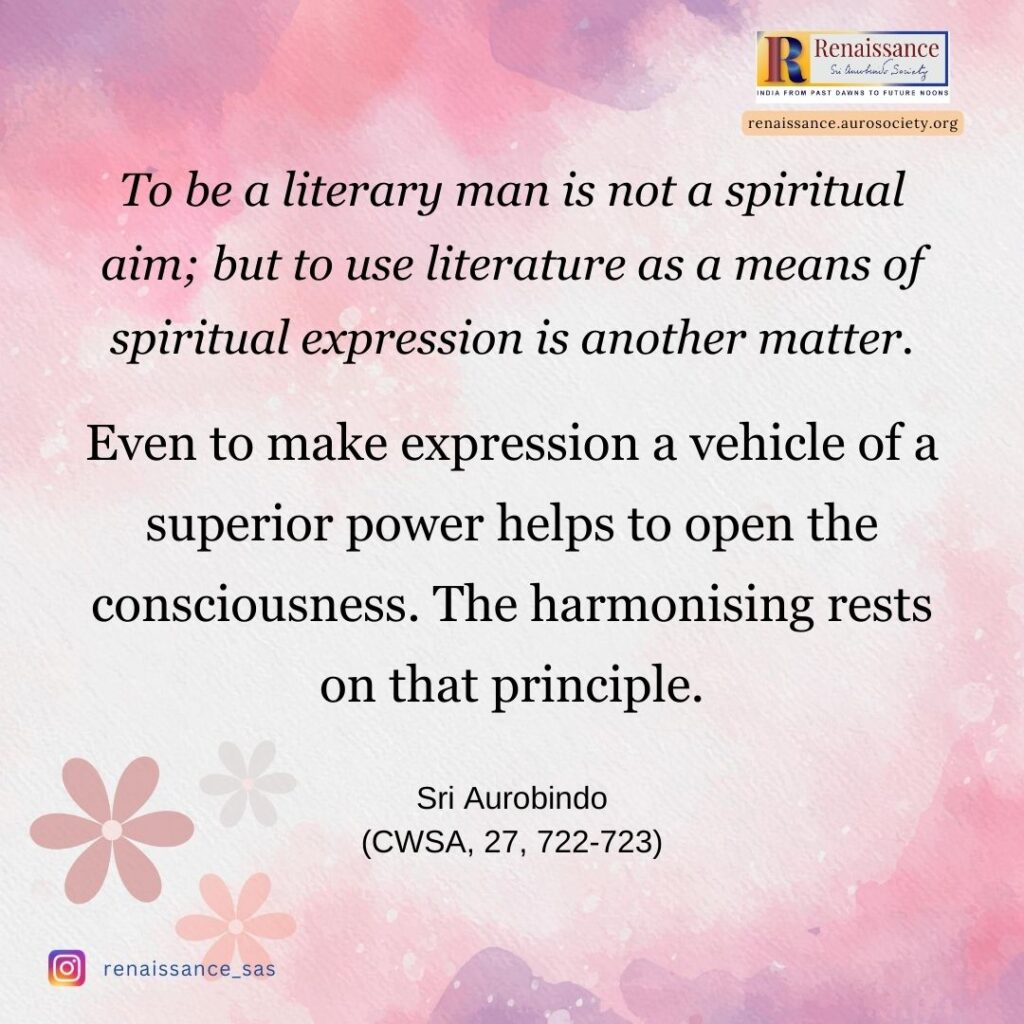
Should I read? What to read? How to read?
In the feature titled Literature and Progress on the Path we have the Mother answers to some questions on how one should approach literature, especially if one is an aspirant on the path of integral yoga. She explains that the significance of literature is not to be found in what is said but rather in how it is being said and the feeling it evokes in the reader. While reading high quality literature can help one progress intellectually and develop a good taste and sense of forms, the Mother reminds that the real knowledge comes from above the mind. And to receive it one needs to move beyond reading literature.
Also, the feature titled How to Choose which Books to Read? highlights some more responses from the Mother to a wide range of questions on choosing right books to read. She shares that today’s world is filled with worthless literature. There are many books that lower or degrade one’s consciousness. One needs to consciously choose books that are filled with light.
Once a disciple asked Sri Aurobindo why is it that sometimes secular literature gives a greater light and illumination than religious literature. Sri Aurobindo’s reply gives us much to contemplate on:
Religious literature inspires only the religious-minded,—and most religious literature, apart from the comparatively few great books, is poor stuff. Secular literature either appeals to the idealistic mind or to the emotions or to the aesthetic element in us, and all that has a much easier and more common appeal. As for spiritual light, it is another thing altogether. Spirituality is other than mental idealism and other than religion.
~ CWSA, Vol. 27, p. 730
Reading and Yoga
If one is looking for spiritual light or progress in the inner journey, there is only a limited preparatory role that reading and meditating on spiritual literature can play. But because the real knowledge comes from above the mind, for that one needs to silence the mind, bring a certain quietude within so that one becomes open and receptive to the light of higher knowledge.
In the feature titled Not to be a Sadhak of Books but of the Infinite we bring some selections from Sri Aurobindo and the Mother where they explain for that for a sadhak, it is not sufficient to read spiritual literature and acquire knowledge. One must go beyond what is in the scripture to acquire the eternal knowledge. They also emphasize the need to practice what has been read.
Disciple: Mother, how can one become wise?
The Mother: Read Sri Aurobindo.
~ CWM, Vol. 12, p. 206
It is also important to understand that the consciousness which has gone in writing of a work of literature — any kind, religious, spiritual or secular — has an impact on the experience it creates in the reader. This is why the Mother had given specific guidance to teachers on selecting appropriate reading material for the children. She also emphasised that reading good literature can help refine the being, and bring one out of the crudity and shallowness. Sri Aurobindo also wrote several letters to disciples in this regard.
But given that a human being is a complex mixture of many different parts, which in turn are again inter-mixed and are moved by various kinds of forces from different planes of consciousness, we often find that “plenty of insincere men have written inspiring things.” Sri Aurobindo explains that this is because something in them felt it, though they could not carry it out in life, and that something was used by a greater power behind.
Very often in his art, in his writings, the higher part of a man comes out, while the lower dominates his life.
~ CWSA, Vol. 27, p. 730
Q: How is it that one person reads sacred books, yet is very far from the Divine, while another reads the most stupid so-called literary productions and remains in contact with the Divine?
Sri Aurobindo: It is not reading that brings the contact, it is the will and aspiration in the being that bring it.
~ CWSA, Vol. 27, p. 731
The above-mentioned advice can be helpful for a conscious reader, especially when one is trying to progress on the path of sadhana. It is important to reflect upon the significance of the reader’s will and aspiration when approaching spiritual literature such as the works of Sri Aurobindo and the Mother which are the containers of their consciousness and force.
We take up this topic in our feature titled How to Read Sri Aurobindo and Get Answers from Him in which the Mother shares some important advice on how to read Sri Aurobindo’s words. She says that if one sincerely aspires, one can get all answers from his potent words. Sri Aurobindo’s words are containers of spiritual forces. And that is why his words need to be read little by little and regularly with a silent mind so that they penetrate the depth of the being.
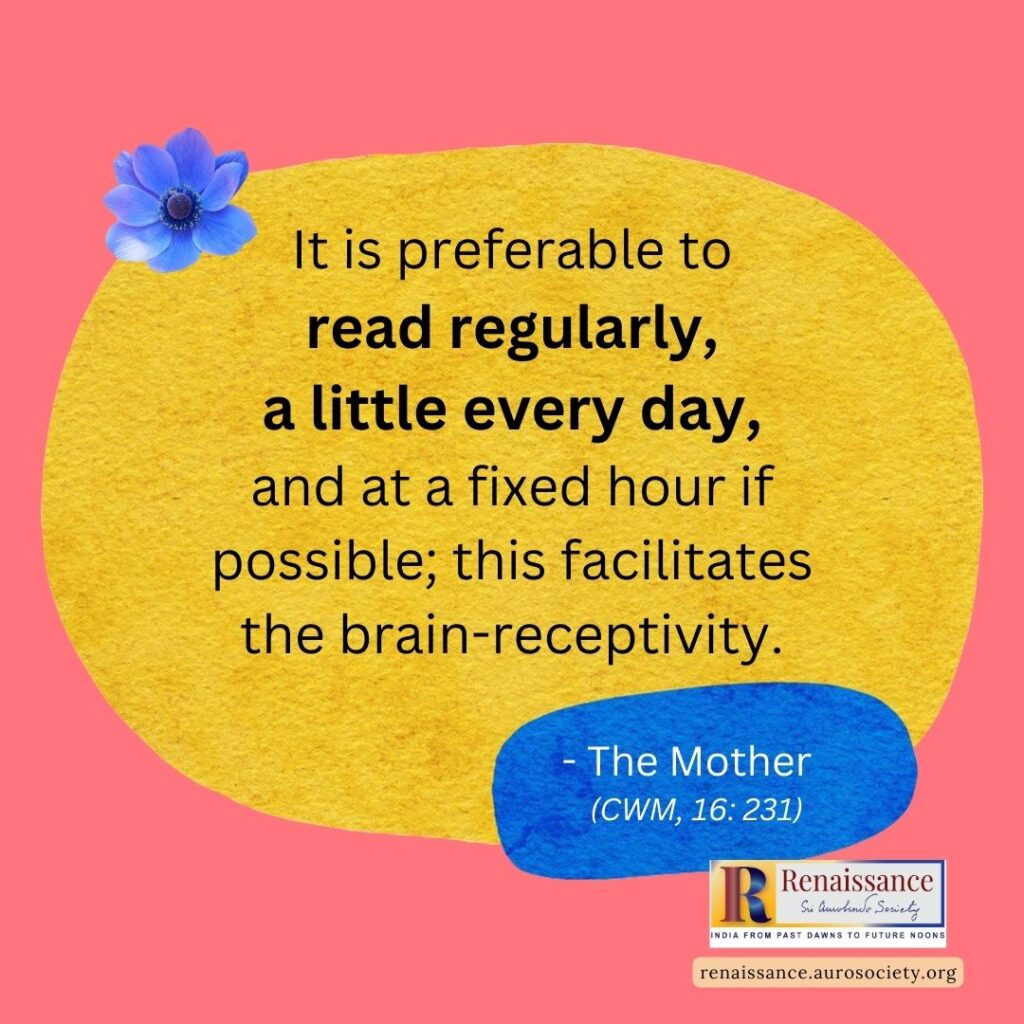
Focus: Sri Aurobindo’s Literature
The current issue also includes several features highlighting Sri Aurobindo’s literary works. Borrowing a truth-statement from the Mother to title one of our features as To Read Savitri is Indeed to Practise Yoga, we present a delightful selection from K.R. Srinivasa Iyengar’s book “Sri Aurobindo: a Biography and a History.” In these passages, the author explores the question: “After the stupendous Arya sequences, where was the necessity for yet another massive effort of literary creation? Sri Aurobindo had written poems and plays enough, and it couldn’t therefore have been any desire for fresh poetic laurels that led to the embarkation on the Savitri adventure.”
About Savitri, the Mother also said that it is a “complete system of yoga which can serve as a guide for those who want to follow the integral sadhana” (CWM, Vol. 13, p. 24) We include a brief commentary on Savitri by Amal Kiran dated 21.2.1980, which was published in the Ashram monthly journal Mother India in October 2003.
Savitri is . . . a new kind of poem, a poem whose making was Yoga Sadhana and whose reading too should be such Sadhana.
(K. R. Srinivasa Iyengar)
In a two-part essay titled A Great Illuminative Power’ – Appreciating Sri Aurobindo’s Poetry, Gayatri Majumdar, a poet herself, presents a few key facets of Sri Aurobindo’s poetry and poetics which she finds most fascinating. In the first part, the focus is on poetry as an expression of spiritual experience, and also on Sri Aurobindo, the poet-maker. The second part outlines the poetic vision of Sri Aurobindo and introduces the reader to what Sri Aurobindo speaks of as “Future Poetry” and “Overhead Aesthesis.”
Oeendrila Guha joins the Renaissance group of authors. In her maiden piece titled Life, Love and Union in Sri Aurobindo’s Eric, she emphasises that most of Sri Aurobindo’s dramatic works address love, but it is the kind of love that aids the giver and the recipient to prepare for a divine love. She then zooms in on his play Eric and brings to light the themes of love and union as depicted in this play.
We also have our regular contributor Narendra Murty who too has borrowed a line from Sri Aurobindo’s Savitri to title his piece A Splendour that Lit up the Suns. He ingeniously connects the three paths of Yoga – Action, Love and Knowledge – with some of the most important works in world literature that speak of the highest seeking of the spirit. He reminds that “if there is a highest point of meeting between Literature and Yoga, it has to be in the works of Sri Aurobindo.”

Translations, Book of the Month and More
Sri Aurobindo also contributed greatly to the world of literature through his translations and free renderings of some of the significant works written in several languages. In the current issue we feature a few of Sri Aurobindo’s translations from Tamil. These are selections from two widely read works from Tamil literary corpus, ThiruKural and Andal’s Bhakti poetry.
Carrying on with the translation theme, we also feature a few selections contributed by Anju Makhija, a Sahitya Akademi award-winning poet, playwright, editor and translator. These are her English translations of a few verses by Shah Abdul Latif (1689 to 1752 CE), a renowned Sufi mystic and poet, and are excerpted from her volume titled Seeking the Beloved – the mystical verse of Shah Abdul Latif (Katha, 2005).
Writing and reading absorb the mind and fill it with images and influences; if the images and influences are not of the right kind they naturally turn one away from the true consciousness. It is only if one has the true consciousness well established already that one can read or write anything whatever without losing it or without any other harm.
~ Sri Aurobindo, CWSA, Vol. 27, p. 727
For our ‘Book of the Month’ we feature Dr. Charan Singh Kedarkhandi’s recently released book of poetry (2023, Sri Aurobindo Study Center, Joshimath). It was a delight to read and write a short review of this book titled Dancing with the Moon & Other Poems — a collection of 80 poems, each with its own special charm and beauty, each expressing a different emotion.
We cannot have an issue on the theme of Literature and not include anything about children’s literature. From 1951 to 1956, during her Friday classes, the Mother used to tell the children in the Ashram stories from various parts of the world. She also encouraged a small group of them to write stories. In the current issue, we feature a children’s story on Simplicity written by Tara Jauhar during her early teens.
We conclude the six-part series by Prema Nandkumar titled Sri Aurobindo’s Interpretation of Indian Culture: The Mahabharata. Here, the author highlights Sri Aurobindo’s epic commentary on the crest-jewel of the Mahabharata, the Bhagavad Gita.
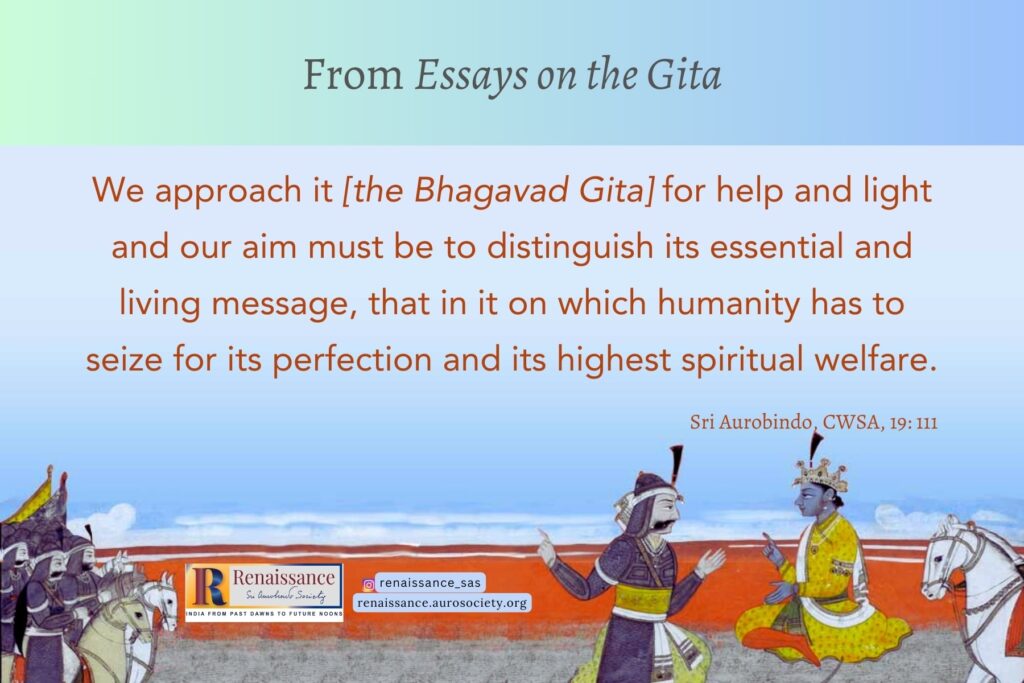
Coming up soon!
In 1906, in a small essay titled ‘Originality in National Literatures,’ Sri Aurobindo wrote that it is an unexplained phenomenon in the psychological history of mankind that out of so many magnificent civilisations, so many powerful, cultured and vigorous nations and empires, only a select few have been able to develop a “thoroughly original and self-revealing literature.” And that still fewer have actually succeeded in maintaining these characteristics from beginning to end of their literary development. He continued,
. . . the Hindus have revealed themselves the most perfectly, continuously and on the most colossal scale, precisely because they have been the most indomitably original in the form & matter of their literature. The Vedas, Upanishads & Puranas are unique in their kind; the great Epics in their form and type of art stand apart in the epic literature of the world, the old Sanscrit [sic] drama has its affinities with a dramatic species which developed itself in Europe more than a thousand years later, and the literary epic follows laws of form and canons of art which are purely indigenous.
~ CWSA, Vol. 1, pp. 146-147
And this immense body of first-rate work has left us so intimate & complete a revelation of national life & history, that the absence of pure historical writings becomes a subject of merely conventional regret. The same intense originality and depth of self-expression are continued after the decline of the classical language in the national literatures of Maharashtra, Bengal & the Hindi-speaking North.
Inspired by the above, we are currently working on an E-book which will present an overview of Indian literary tradition in the light of Sri Aurobindo. The E-book will soon be released by Auropublications, Sri Aurobindo Society’s publications wing. Do follow us on social media to stay updated.
As always, we offer this work at the lotus feet of Sri Aurobindo and the Mother.
In gratitude,
Beloo Mehra (for Renaissance Editorial Team)

~ Design: Beloo Mehra & Raamkumar

